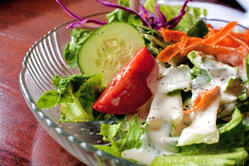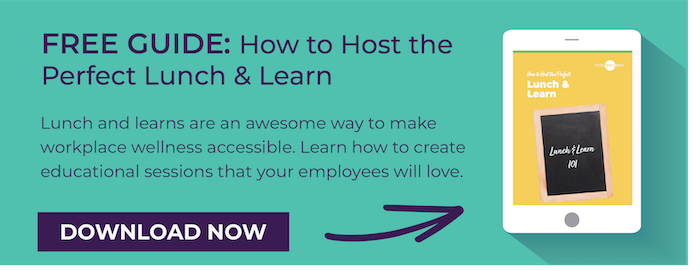You may think you made the better choice by ordering a salad than the co-worker scarfing down a burger and fries, but looks can be deceiving. While the leafy green base of your meal is a great start, everything you top it with can add enough calories, sodium and fat to make it just as bad as a fast food meal. Here are the do's and don'ts of adding ingredients to your salad. 
Don't add a creamy dressing. Ranch, thousand island, Caesar or blue cheese dressings are often cream- or mayo-based and add a bunch of unneccesary calories.
Do order a vineagrette or olive oil-based dressing on the side. Try dipping your fork in the dressing and then eating a bite of salad rather than pouring it all over the top.
Don't load up your salad with a bunch of cheese. While some cheese is okay and can elevate your salad, a lot of it adds calories and fat that counters the health benefits of your green lunch.
Do top your salad with a bit of cheese as a flavoring. A stronger cheese, like blue cheese or feta crumbles, will add a lot of flavor with just a small amount.
Don't add croutons or tortilla chips. Southwestern-inspired or Caesar salads are the biggest offenders of these two ingredients; just ask for them to be left off your order.
Do add nuts to your salad. Almonds, walnuts or pine nuts add the crunch you can get from a crouton with more nutritional benefits and good fats.
Don't top your salad with fried chicken. While a protein element is good, adding anything fried to your favorite greens can boost the calorie and fat content.
Do add a lean protein. If you didn't opt for nuts, try grilled chicken, salmon, beans, turkey or tofu.
Don't add a bunch of sweet ingredients and dried fruit to your salad. Opt for fresh fruit whenever possible.
Do load up your salad with veggies and a variety of lettuce. Spinach, artichokes, carrots, broccoli, radishes, bell peppers, tomatoes, onions, mushrooms, and cucumbers will all add flavor, color and fullness to the dish.
Don't add too many fatty ingredients (even if it's good fat)! Adding cheese, avocado and nuts to a salad can add a lot of calories, so be sure you're balancing everything out. Go heavy on the avocado or light on the cheese, or opt for slivered instead of whole almonds.
Do be sure to add enough toppings (protein, veggies, healthy fats, etc.) that you're going to feel full after you eat your salad. If you're still hungry afterwards, it's going to be harder to eat healthy throughout the rest of the day.
This list of healthy do's and don'ts will help you to make the best nutritional decisions during your day.



